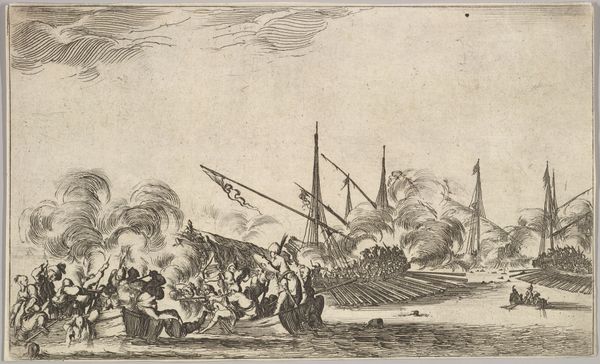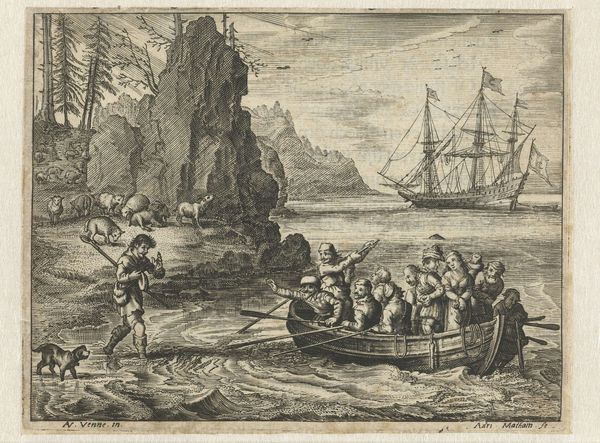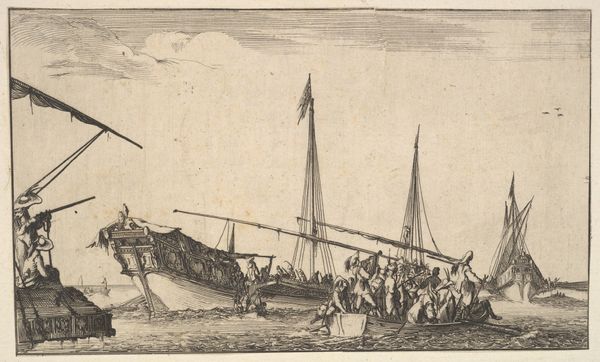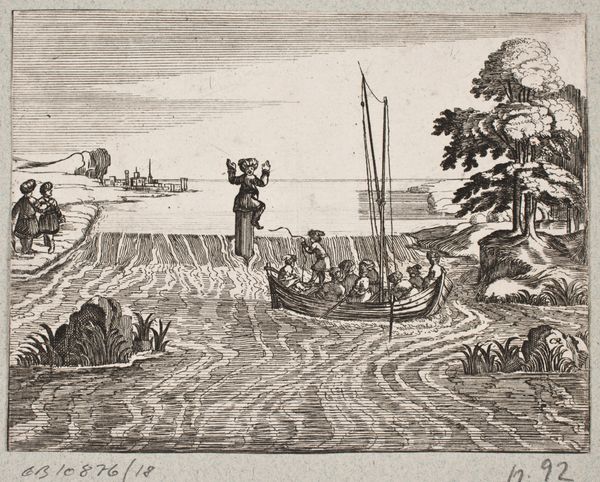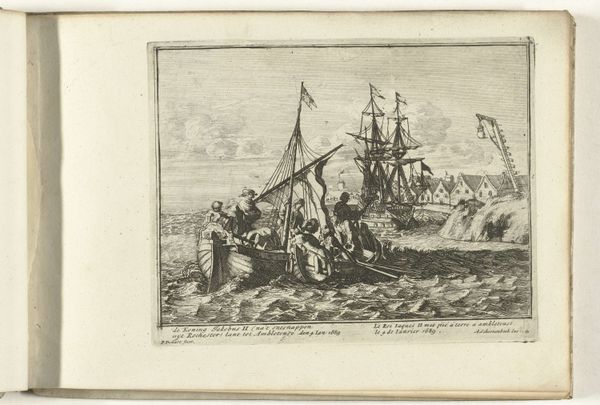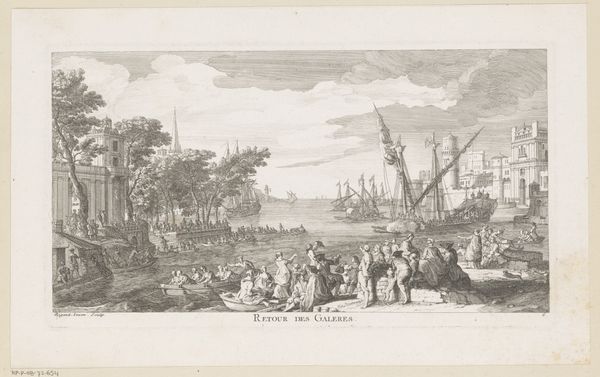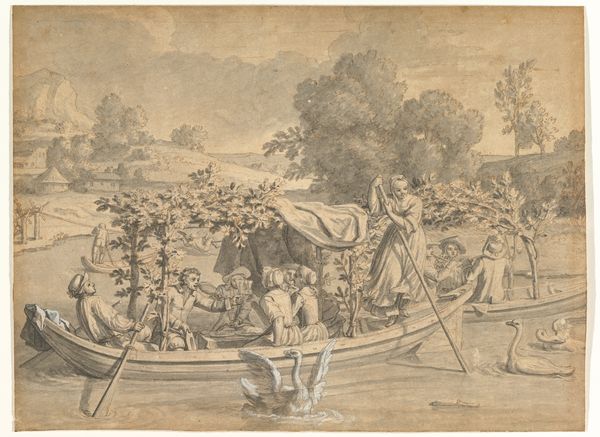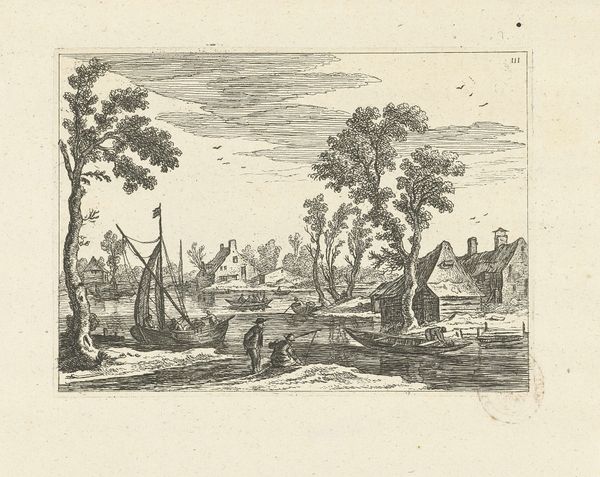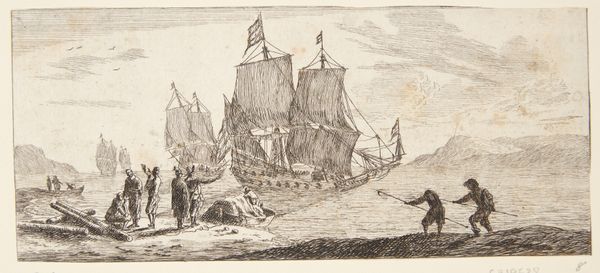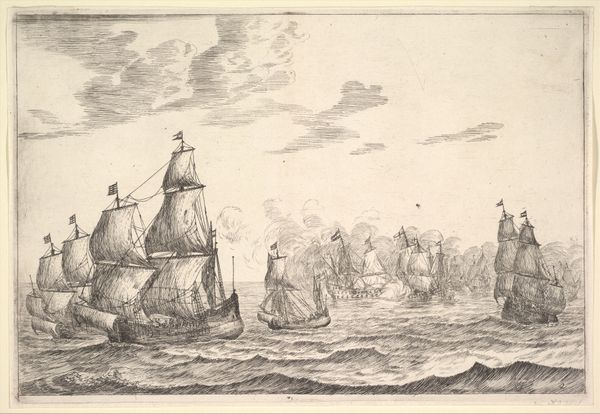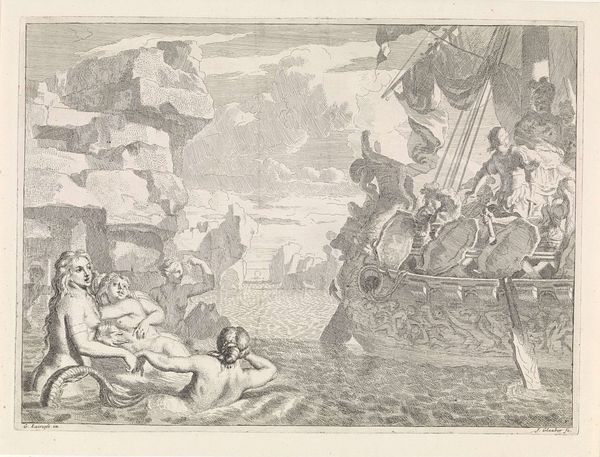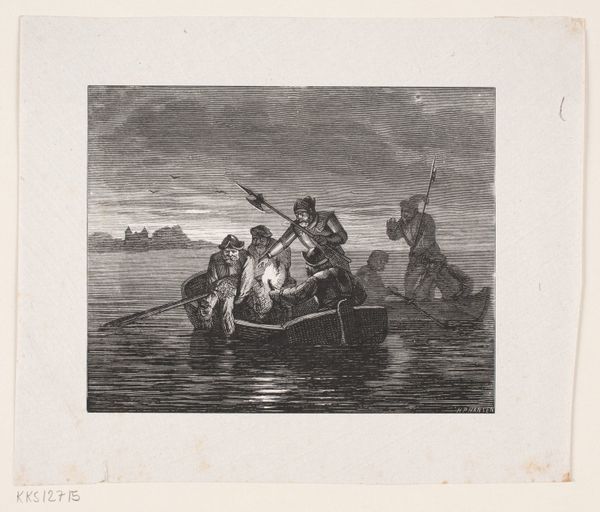
Groep mannen op een schip een vlag hijsend met daarop de tekst ´De Sabbathbreekster´ 1836 - 1912
0:00
0:00
print, engraving
#
light pencil work
#
narrative-art
# print
#
old engraving style
#
sketch book
#
landscape
#
personal sketchbook
#
sketchwork
#
pen-ink sketch
#
line
#
pen work
#
sketchbook drawing
#
genre-painting
#
history-painting
#
storyboard and sketchbook work
#
sketchbook art
#
engraving
#
realism
Dimensions: height 89 mm, width 79 mm
Copyright: Rijks Museum: Open Domain
Curator: This engraving, attributed to Isaac Weissenbruch and dated roughly between 1836 and 1912, depicts a group of men on a boat hoisting a flag. Editor: My immediate impression is one of clandestine activity. The stark lines and restricted palette give it a secretive, almost rebellious mood. The figures are densely packed, suggesting urgency and collective action. Curator: Indeed. The text emblazoned on the flag, "De Sabbathbreekster," which translates to "The Sabbath Breaker," adds another layer of intrigue. This connects to a specific socio-religious context. Consider the meaning ascribed to the Sabbath, rest and worship. What does it mean to publicly break it, and who would celebrate that act? Editor: Precisely! Flags are fascinating symbols, and this one broadcasts a clear, albeit subversive, message. Visually, the flag becomes a symbol of resistance or defiance against religious law. The figures, by hoisting it, embody a shared identity rooted in this defiance. Who exactly they are, though, remains unclear. Curator: That's where material context becomes key. Given Weissenbruch's focus on the daily life of ordinary people, the print suggests a communal event, perhaps related to labor practices or political protest. Think of it as an image about access: access to labor and leisure, maybe even resistance against restrictive religious norms upheld by societal powers. Editor: And the water itself! The medium carrying the 'breakers', fluid and uncontrollable, reflecting both potential and instability. Even the choice to render it in engraving--a medium historically associated with distributing information and creating multiple copies--underscores its potential for widespread influence and perhaps instigation. Curator: Yes, engraving made it an affordable artwork at that time, a potentially radical message circulating for all to see, printed again and again...it shifts the status of the image away from rarefied "high art", embedding it within everyday visual culture and political discourse. It's not just *what* it represents but *how* it became representation itself, manufactured, multiplied, distributed, maybe pasted to walls... Editor: What lingers with me is this rather potent declaration of breaking from convention; it raises enduring questions about authority and collective rebellion. What sacred cows do we collectively challenge, or uphold, today? Curator: For me, understanding the technical process and historical backdrop illuminates the socio-political message. The engraving is not just a picture, but a manufactured object of rebellion, disseminated in its time, and now resonating differently, if subtly, even today.
Comments
No comments
Be the first to comment and join the conversation on the ultimate creative platform.

